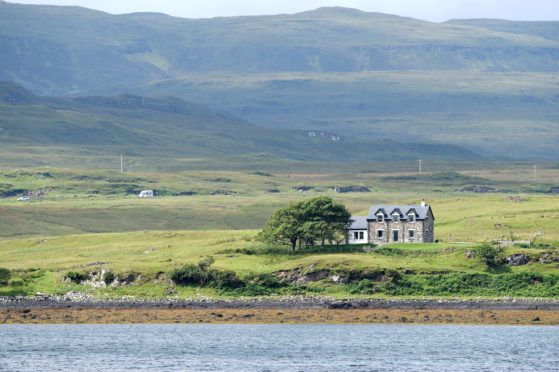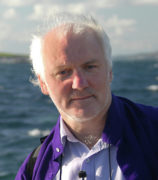I’m sort of glad that Hugh Magnus MacLeod of MacLeod, the 30th hereditary chief of the clan, has been awarded a a million pounds of public money to “rewild” part of his 42,000-acre estate on Skye.
Young Hugh is not personally being given the money of course, nor will he personally plant all of the 300,000 native trees which will blossom on the Dunvegan estate, though his estate’s commitment to the environment is welcome.
It’s a shame that MacLeod, in announcing this development, meanwhile denigrated those crofters and others who have done their best over the years to farm and work the land. Describing parts of Skye as an “unnatural, wet desert” and “a lunarscape” may read well in a London press-release, but does nothing to praise or support those crofters and others who have, despite everything, managed to sustain a way of living in one of the most beautiful islands in the world.
Ever since the strange day I went to school and in Primary One learned about Isaac Newton sitting under a tree, with an apple falling on to his head, and him shouting ‘Eureka!’ or ‘Gravity’ (I couldn’t quite remember which) I instantly understood that’s why it wasn’t someone from South Uist who discovered gravity – we had no trees. And besides, nothing ever fell down anyway, because the wind was so strong, coming directly from the North Pole, that everything flew sideways. Which meant that vertical didn’t exist, which made geometry a tad challenging for me later on.
Truth is that South Uist, along with Skye and the whole of the rest of Scotland was at one time covered in trees. As far as I understand, three things accounted for the denuding of our landscape: the destruction and burning of trees by the Vikings when they arrived in force from the 8th century onwards; the later demand, from the time of King Henry V111 and King James onwards, for timber to build ships for the navy; and the arrival of the great white sheep from the 18th century onwards, with thousands upon thousands of people cleared to make way for them. What with Vikings and the demands of kings and sheep and deer and clearances, no wonder the Gaidhealtachd became an “empty wilderness.”
And yet oral tradition itself tells us that the Highlands and the west coast landscape was at one time very different: more like the garden of Eden itself rather than MacLeod’s lunar landscape. One of my favourite pieces of tradition was recorded from a bàrd and story-teller from South Uist I knew quite well – Donald John MacDonald of Penenirine.
Donald John had one of the great Duain – Ballads – which dated back to pre-Christian times. The ballad is attributed to Nighean Mhòr Chorodail – The Big Maiden of Corrodale – who gives a vivid description of a time when the western isles were not divided into separate islands, but were one mass of land, stretching out as far as St Kilda. Interestingly, part of the song tells of Nighean MHòr Chorodail returning home at the end of the day with “her apron full of hazel-buts gathered from the big forest between the two Bornishes.”
It is oral evidence that the now-denuded Western Isles were, at one time, a verdant forest garden. So good luck to Hugh and to Scottish Woodlands Ltd who will plant the trees in the north-west of Skye by the end of 2021. A total of 371,875 trees will be planted, and I’m delighted to see that the focus will be on planting native trees that used to grow on the fertile peat soil, including birch, rowan, cherry, willow, hawthorn and sycamore.
It would be good to see a similar investment in planting indigenous people back into their native land. In recent years Skye has just about become the world’s favourite resort. Pre-Covid, it had so many visitors I truly feared it would literally sink under the weight. I fear that Covid has accelerated the race out of the cities to places like Skye so that it is financially impossible for any young native person to compete in the inflationary housing market.
It’s as if the indigenous trees were being uprooted and cut down and replaced with commercially profitable sitka spruce. If “rewilding” the landscape with native trees is now being encouraged with huge sums of money, so too must the re-establishing of young local communities. I’m sure all that empty land on all these vast estates could grow people as well as trees.
Angus Peter Campbell is an award-winning writer and actor from South Uist

